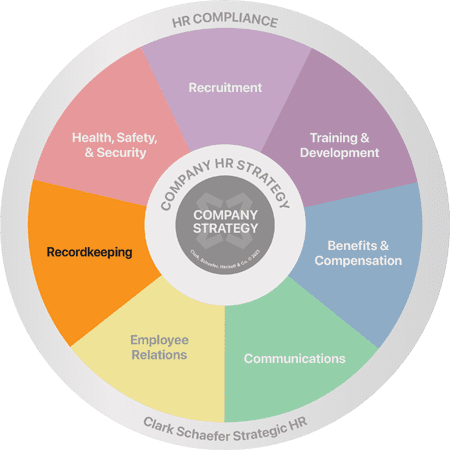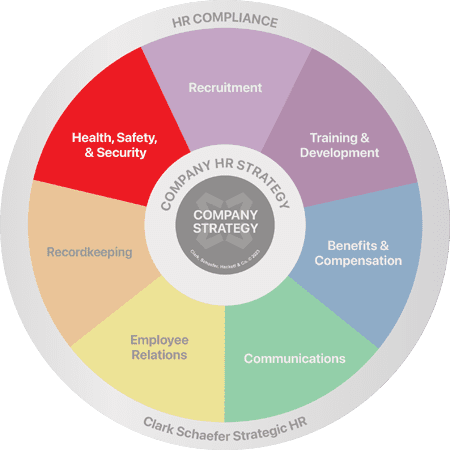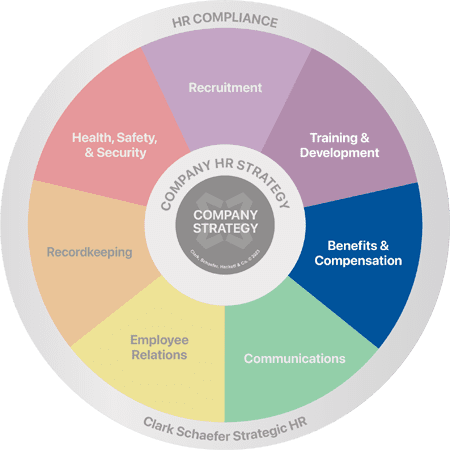What Are Employee Pulse Surveys And How Can They Increase Retention?
Last Updated on January 9, 2025 / Employee Relations

HR Question:
We are exploring ways to increase our employee retention and engagement, and someone suggested doing an employee pulse survey. Can you explain what that is and how to best use it to drive engagement?
HR Answer:
Given the labor market the past few years, it is no secret that employers have seen formidable challenges to the retention of valued employees. To add to this concern, Gallup reports that only 32% of employees are actively engaged, and an additional 17% of employees are actively disengaged. This begs the question: how can employers work proactively to retain valued employees and spur employee engagement?
One answer may be deceptively simple: ask your employees through a survey! Employee Pulse Surveys can serve as an excellent tool to garner actionable feedback from your employees regarding key issues such as leadership, total rewards, culture, and engagement. Not to be confused with a standard engagement survey, a pulse survey is distinct in a few key ways:
- Pulse surveys are shorter. Typically only one to five questions, the shorter survey length can help to combat survey fatigue and result in a higher response rate from employees.
- They’re more frequent. Pulse surveys can be sent out on a weekly, monthly, or quarterly basis. The frequency of data collection makes it easier to see trends develop in real-time and respond accordingly.
- There’s only one focus. Pulse surveys typically focus on one specific topic. The narrow scope of pulse surveys helps you to collect feedback on critical items in between larger, more complex engagement surveys. Action plans can be developed in a timely manner to tackle any pressing concerns before the feedback becomes outdated.
Creating Pulse Surveys
To implement a pulse survey, first, decide on a topic. Consider focusing on a new initiative rollout or a topic that has been of critical interest to your employees (i.e., compensation, benefit offerings, workplace culture, etc.). Next, choose one to five questions that are tailored to this topic. The questions may primarily entail quick, structured questions (such as a Likert scale, multiple choice, or drop-down), which allow for a more quantitative, structured analysis. You may also want to include one or two open-ended questions, which can provide additional customized insight into your data.
Once the content of the survey is established, you will want to choose a survey tool by which to collect the data. Survey Methods is one of Strategic HR’s favorite tools for data collection, although many platforms serve these purposes. By leveraging a third-party survey administrator, you can ensure that your pulse surveys are administered anonymously to gather the most genuine (and valuable) feedback.
Understanding Your Results and Taking Action
The next step may arguably be the most important: creating an action plan to address the feedback that your employees have provided. Do you see common themes? Are there concerns that are identified across the board? These items should be identified, prioritized, and addressed individually. Finally, a timeline should be established to include ownership of each task and a target fulfillment date.
Don’t Forget to Follow Up!
If your employees gave their time to share their thoughts, be sure to return the favor by communicating the results of your pulse survey and the corresponding action plan(s) to your employees. This ensures that your employees know that their feedback is informing actionable changes to improve their experience.
By following these steps for thoughtful implementation of pulse surveys, you can show your employees that your organization cares about their experience and is committed to improving it. While labor market woes remain, pulse surveys can help mitigate these challenges to spur employee engagement and commitment to your organization.
Special thanks to Christine McLaughlin for contributing to this edition of our HR Question of the Week!
Connecting with your workforce can be difficult – factor in multiple shifts, various locations, off-site employees, and a multi-generational workforce, and you quickly learn that checking in with everyone on your team isn’t easy. Clark Schaefer Strategic HR have years of experience formulating engaging and impactful engagement surveys to better understand your employees’ perspectives, needs, and preferences. Visit our Employee Relations page to learn more.








